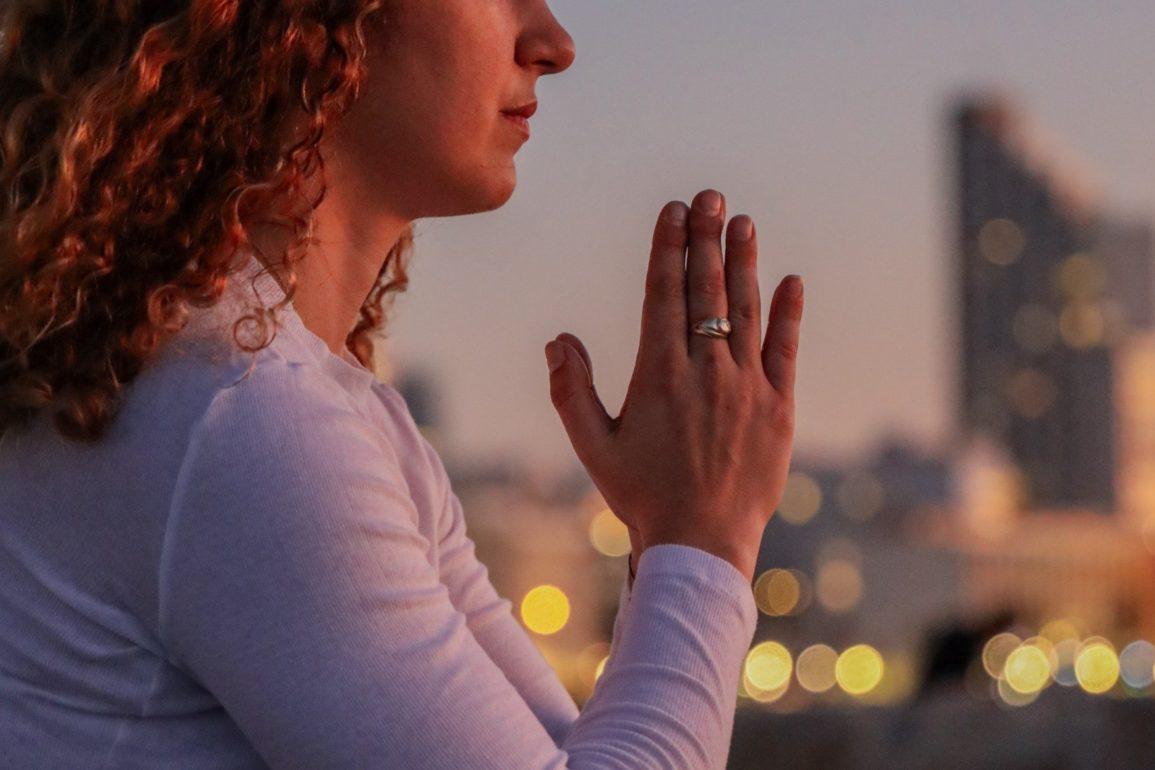There are remarkable benefits to meditation, especially for those already applying the Law of Attraction (and beginners can begin applying the Law of Attraction now). With benefits ranging from better self-awareness to an improved overall sense of well-being, meditation is suitable for everyone.
If you are new to meditation, you may wonder how to get started. It isn’t as overwhelming as you might expect. Here is a beginner’s guide to meditation if you want to experience the benefits that the practice can bring.
Introduction to Meditation: A Brief History
Despite meditation’s enormous popularity, you may not know much about its origins. The term comes from the Latin word “meditatum”, which means “ponder.” But who first proposed the practice, and how did it develop?
Meditation’s Ancient History
Several compelling arguments support the idea that the hunter-gatherer culture incorporated meditation, and the earliest documentation of meditative practices indicates that meditation first began around 1500 BCE.
It is believed to have originated in India as part of the early Hindu tradition. The practice was also part of Buddhist practices in India and Taoist practices in China over a thousand years later. In Western society, interest in meditation was fostered by Philo of Alexandria and then Saint Augustine.
It is important to note the split that occurred between Eastern traditions of Hindu and Buddhist meditation in order to fully understand the history of meditation. Hindus believed meditation could be used to commune with God, while Buddhists held that meditation could be used to better understand the interconnectedness of all things.
Most people adhere to this non-religious view of meditation today, believing it to be a plausible method for improving mental health, combating stress and inducing feelings of calmness.
You may like: 5 Simple Ways to Change Your Life With The Law Of Attraction (Learn This)
Meditation Today
Meditation’s modern perspective originated in the 1960s and 1970s, when medics and psychologists began shedding the stigma associated with religious meditation and exploring the benefits in a healthcare setting (partly in conjunction with hypnotherapy).
In continuing studies, scientists discovered that meditation can reduce physical signs and symptoms of stress.
The various forms of meditation include mindful breathing, body scanning, creative visualizations, and loving-kindness meditations.
The many benefits of meditation
There are a variety of health benefits of meditation, as you’re probably aware. Once considered a simple means of calming down or gaining perspective, meditation has now become an integral part of a wide variety of treatment programs.
The regular practice of meditation can have a positive impact on both mental and physical health, and it can also benefit the most important connections between the two.
Below, we’ll explore the major positive effects of meditation, with references to some of the most fascinating new research on how it affects the body and the mind.
Benefits of Meditation for the Body
Meditation is constantly being studied by scientists, but some of the most well-established benefits are as follows:
- Improved heart health through lower blood pressure and lower cholesterol. This results in a reduction in heart attacks and strokes.
- Improved immune system function, including better resistance to diseases (such as colds and flus) and improved health outcomes in cases of serious illness.
- Reduced physical symptoms of anxiety, including numbness, tingling, tense muscles, and panic attacks.
- Improved concentration, balance, and flexibility, with participants reporting better athletic performance. Both laypeople and professionals have cited this benefit.
- Reduction in the amount of time it takes to fall asleep and more restful sleep.
- Better recovery from physical dependence on drugs or alcohol.
- Better resilience when coping with chronic pain (e.g. due to arthritis or fibromyalgia).
- Potentially reduced age-related memory loss.
Meditation: Spiritual Benefits
Since meditation originated as a religious practice, it is not surprising that it provides spiritual benefits. It is still possible to live a fulfilling spiritual life if you are atheist or agnostic. Here are a few benefits of meditation in this regard:
- Possessing a better sense of perspective, discarding the unnecessary and focusing on what matters.
- An enhanced sense of peace about one’s humble place in the universe (which reduces the temptation to live an ego-driven life).
- Having a clearer sense of purpose that influences relationships, career choices, and daily living.
- An increased capacity to empathize with others due to a new understanding of your similarities.
- The feeling that your mind, body, and spirit are more “in tune” than ever.
- You feel even more connected to everyone and everything around you. Some people call this feeling “oneness.”
- An easier and more honest way to accept yourself, especially when it comes to things that you can’t change.
- The sense of a deeper connection to a higher power if you are religious.
Benefits of meditation for mental health
Meditation has recently attracted a lot of attention. It can be used to cope with mental health issues and improve your emotional well-being. Daily meditation has a variety of mental health benefits, including:
- Focus on the present without ruminating on the past or worrying about the future.
- Enhancements in how you deal with stress, at home and at work.
- Stress is reduced (partly due to a reduction in heart rate and respiration rate). People with post-traumatic stress disorder report similar benefits.
- The ability to focus on what you want to focus on, and to dismiss unproductive or racing thoughts.
- Significant improvements in depression symptoms. Studies have shown that meditation is as effective as medication when it comes to treating depression.
- Increased emotional intelligence. Consequently, you can more easily recognize your emotions, accept them, and regulate them as necessary.
- When in conflict with your partner, you are more thoughtful and patient.
- There is the potential to overcome phobias (such as flying fear or fear of open spaces) including life-limiting ones.
- Increased self-awareness. Partly because you spend more time reflecting on yourself, and partly because meditation requires you to honestly tune into who you are and what you feel.
Meditation Types
Meditation benefits are fairly consistent regardless of the type you practice. Nevertheless, some people are more suited to some types than others, and some forms of meditation do focus on specific benefits. Some of the most popular forms of meditation include these.
Meditation involving Mindful Movement.
Movement meditation refers to meditative practices which involve physical movement.
It doesn’t matter what kind of movement you do, movement meditation is all about tuning into your body.
It requires you to be fully present in the moment.
Your thoughts will calm and slow down as you focus your full attention on the body.
Yoga meditation is a great example of movement meditation.
Several types exist, such as Qigong Meditation and Kundalini Yoga.
In any yoga meditation, you can benefit from controlling the pace with your breath.
When you begin to settle into the stretch, inhale as you move into the new pose, and exhale when you have fully settled.
As you breathe slowly and steadily, your thinking will also become slower and more clear.
Yoga is the most common form of movement meditation.
You can turn any movement into a meditative practice if you challenge yourself to fully inhabit that movement.
To make a walk into a form of movement meditation, slow your pace and pay attention to how your body feels as you walk – to the way your muscles relax and contract, or how the air feels on your skin.
Mindfulness Meditation
The goal of mindfulness meditation is similar to that of movement meditation, but it covers a broader spectrum.
Focus on what you’re doing in the present moment is what mindfulness is all about.
Simple activities such as cooking or a specific mindfulness exercise can be used for this purpose.
When you practice body scan meditation – a kind of focus meditation – you concentrate your attention on each part of the body in turn.
Feel each part of your body starting with your head and working your way down.
Where do you hold tension? Where do you feel loose and relaxed?
Simply observe and don’t make any judgments.
Zen Meditation is sometimes referred to as mindfulness, as it has roots in Buddhist traditions and aims to calm and simplify the mind.
Practice of mindfulness changes your perspective over time.
It enables you to live in the present and to be deeply aware of your own thoughts and feelings without feeling overwhelmed.
Studies have shown that mindfulness changes your brain, helping you to regulate your emotions.
Spiritual Meditation
Spiritual meditation is practiced to connect with something greater than yourself.
For some, this will be deeply entwined with their religious beliefs.
Others consider spiritual meditation to be more about remembering that everyone and everything in the universe is interconnected, and about reflecting on their life’s purpose.
There are several types of meditation that are particularly beneficial for spiritual development.
The practice of Transcendental Meditation, for example, is silent and mantra-focused.
During practice, you focus on one sound or phrase that you repeat in your head for up to 20 minutes each day.
The main objective of mantra meditation is to keep your mind free of restless thoughts by keeping your attention focused on a simple, repetitive word, sound, or sentence.
Vipassana meditation and chakra meditation are other forms of spiritual meditation.
Both aim to enhance your spiritual side and increase your awareness of the wider world.
Chakra meditation focuses on different energy centers in order to treat mental, physical, and emotional blocks.
Meanwhile, Vipassana meditation focuses on connecting the mind and body through deepening the connection between the two.
Visualization Meditation
The goal of visualization meditation is to use your imagination fully, creating vivid mental images that correspond to specific meditation objectives.
In simplest terms, you visualize something that has not occurred yet.
In Law of Attraction meditation, for instance, you might already be familiar with creative visualization techniques.
Imagine yourself having the thing you desire for 10-15 minutes, whether it is love, your dream job, financial abundance, or something else.
The same type of technique is used by many athletes.
Golfers may imagine themselves hitting a hole in one, or soccer players may visualize themselves scoring the winning goal.
There is also loving kindness meditation.
Perhaps you imagine yourself emitted bright, warm energy that makes its way to someone you love.
Alternatively, you could imagine sending the same energy to someone you have mixed feelings toward, or even to someone you find challenging.
The goal here is to cultivate compassion for all beings and make love your default attitude
Types Of Guided Meditation
A guided meditation is a meditation in which you are guided by someone to visualize and focus on specific things.
An in-person presentation is possible (more commonly), as well as an audio recording.
Hypnosis meditation is one of the most popular forms of guided meditation.
As you relax in hypnotherapy, your limiting beliefs are rewritten by the practitioner.
Assisting you in working on your anxiety or helping you find new ways to deal with a phobia.
In Sound Bath Meditation, ambient sounds are played.
Sometimes it is peaceful music, and sometimes it is nature’s sound – the ocean, wind, rain, or whale song.
As the recording progresses, there will be a voice guiding your thoughts and focus.
Meanwhile, there are also guided meditations that are centered on loving-kindness.
A narrator can transform any of the above forms of meditation into a guided meditation.
The major benefit of guided mediation is that it helps you focus.
By keeping you on track, gently returning your attention to the present moment, and allowing you to focus (when you might otherwise be distracted), they can help you focus on your goals.
Learn how to meditate in 5 easy steps here.
Step 1: Find A Tranquil Environment
Meditation can only be successful in a quiet environment.
TV and radio background noise will cause distraction and disrupt your concentration. Choose relaxing, peaceful, and meditative soundscapes instead.
Additionally, it’s best to meditate in a fairly cool or warm place. Too much cold or too much heat will make it difficult for you to focus.
Place yourself in an area where you will not be disturbed.
Step 2: Sit comfortably
Meditation requires you to sit for ten to fifteen minutes in a comfortable position. You don’t need to take up a specific position if you can’t adapt to it.
Meditation is usually done with crossed legs and hands on the lap.
Find a position that feels comfortable for you if you have trouble doing this at first. Just make sure you do not slouch.
Step 3: Breath
Concentrating on your breathing is an important part of meditation. Be sure, however, that it is natural.
You can do this by closing your eyes and taking some deep breaths. Start by taking shallow breaths, and just keep breathing for a few minutes.
You’ll be able to take deeper breaths as you progress. Do not rush your breathing; take your time.
Step 4: Concentrate On Your Thoughts
As you breathe deeply, you should feel more relaxed. Next, focus on how you breathe.
Consciously inhale and exhale each breath. You may need some time to fully focus on your breathing.
Please don’t worry if your thoughts wander. There is nothing wrong with your mind wandering. Allow it to drift and gently return your attention to your breathing.
Beginners may find it difficult to concentrate, however gradually improving their attention should be possible as they continue to practice.
You can ‘count’ your breathing using numbers if you find it easier. As an example, count one for inhaling and two for exhaling, and repeat these numbers in and out.
This method can be effective for getting into the mindset of learning to meditate.
Step 5: Open Your Eyes
At the end of your meditation, open your eyes. At this point, you should be calm and at peace.
Beginner’s Meditation Tips
The first time you learn meditation, it’s important to keep in mind that it’s a skill you’ll cultivate and strengthen over time. These meditation tips will help you enhance your practice when you’re just getting started…
- Watch your posture and make sure your back is straight. You will focus better and infuse your practice with positivity.
- Make meditation part of your morning routine. Set the tone for the rest of your day and take advantage of your receptive state before the rush of the day begins.
- Try counting your breaths for a while if you can’t relax into your meditation. As a result, your thoughts will become calmer, making it easier for your brain to focus.
- Instead of trying to stop your thoughts, let them drift. Distractions are natural; the key is to gently refocus your mind as soon as you realize your attention has wandered.
- If possible, meditate in silence in a quiet room. Listen to instrumental music if background noise is an issue.
- At least commit to meditating for a month. Then you will be able to acquire the basic skills, and be able to see how it can be beneficial.
If you’re interested in exploring other meditation methods in the future, here’s a great audio to start with I always refer to for my meditation students
Listen to The Most Powerful 12-Minute Meditation Audio Ever
Experience the benefit of an hour’s advanced meditation.
Get Your Free Meditation Audio Now.
You may also like:
6 Clear Signs You Have a Strong Mindset + How to Unleash Your Mental Power




